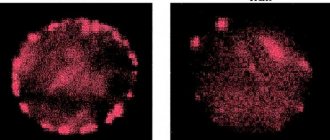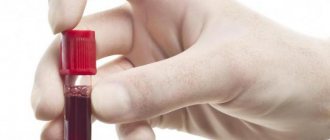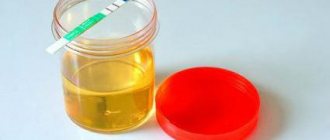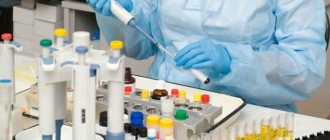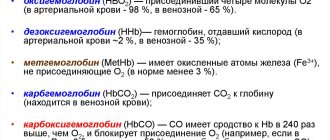Ethanol – colloquially alcohol – is the basis of alcoholic beverages and has a detrimental effect on the functioning of all human organs. Blood is no exception, which explains the influence of alcohol on the results of its tests. Once in the bloodstream, alcohol changes the quality and composition of the blood. To determine the amount of ethanol and the degree of its effect on the body, a laboratory test is performed - a blood test for alcohol.
[toc]
Blood alcohol test
Alcohol, even in a small amount present in the body, can change the hematocrit - part of the volume of red blood cells (red blood cells). This makes the blood more viscous, prone to blood clots. To avoid misinterpretation of test results, doctors recommend not drinking alcoholic beverages the day before the collection.
In case of accidents, fights, conflicts, bodily harm, wherever there are offenses, a blood test for ethanol content is mandatory. This analysis is also important in cases of domestic and industrial injuries, emergencies, fire situations and other misfortunes, to determine the absence/presence of alcohol intoxication and its degree in the victim or perpetrator.
How many ppm is in a bottle of vodka
This is a controversial and rather floating issue. Let's give an example of a calculation so that everyone can determine how many ppm the blood will contain after a certain amount of drinking.
Vodka is a strong drink. For example, let's take 0.5 liters of vodka. According to statistics, this is the volume of bottles most often purchased. The average weight of a man fluctuates around 80-90 kg. Let's take the mass to be 90 kg. We will carry out a step-by-step calculation.
- In medical calculations, the weight of the liquid is assumed to be 70% of the weight of a man and 60% of the weight of a woman. That is, in our case: 90*0.7=63 kg
- Vodka contains 40% alcohol. That is, 0.5*0.4=0.2 l.
- The density of ethyl alcohol is 0.79 g/cm3. And there are 1000 cm3 in one liter. That is, to convert liters to grams, you need to perform the following calculation: (0.2*1000)*0.79=200*0.79=158 g of alcohol.
- Alcohol contains approximately 10% impurities. That is, from 158 g ethanol will be 158 * 0.9 = 142.2 g = 0.1422 kg
- Now let's calculate ppm as the ratio of ethanol to the total amount of fluid in the body: 0.1422/63=0.0023=2.3 ppm.
That is, after a man weighing 90 kg drinks 0.5 liters of vodka, his blood will contain 2.3 ppm of alcohol. This is approximately 1.15 mg of alcohol per liter of air when released.
This is the maximum value that will be achieved when drinking a bottle of vodka. Immediately after entering the body, alcohol begins to be actively processed. The liver and kidneys will try to remove the poison as quickly as possible. Every hour the number of ppm in the blood will decrease.
Indicators of alcohol intoxication
To determine the degree of alcohol intoxication, an analysis is carried out to determine the level of ethanol in the blood, in its thousandth part - ppm (the sign “‰” is used for designation). There are stages of deviations according to indicators:
- 0.5-1.5‰ – mild degree. Minor mental changes: euphoria, excitement, emotional instability. Mild hyperemia, increased sweating, tachycardia, smell of alcohol on the breath.
- 1.5-2.5‰ – average degree. Severe mental disorders: inappropriate behavior, dysphoria, aggressive actions and statements, inhibition. Dilated pupils, drooling, impaired coordination of movements.
- 2.5-3.5‰ – severe degree. Serious mental disorders: disorientation, meaningless statements, amnesia. Difficulty breathing, hypotension, involuntary urination.
- 3-4‰ – extremely severe degree. Alcohol coma. Absence of signs of mental activity, involuntary defecation, pathological reflexes.
- 5-6‰ – lethal outcome. Damage to all organs and systems.
What does ppm alcohol mean, how is it calculated
Content
For those drivers who have at least once been tested for alcohol, the question of ppm does not lose its relevance. After all, as people think, since there is a maximum permissible concentration of ethanol, a certain amount of drinking still takes place. In this material we will analyze the ppm of alcohol. And now - useful thematic links:
- How does alcohol intoxication manifest itself? Here are the signs of poisoning and a lethal dose;
- When the law introduced the permissible alcohol limit for drivers - here, what goals were pursued when abolishing zero ppm;
- Can endogenous alcohol be shown during testing - find out how physiological ethanol is determined.
Before determining the volume of drink, which is characterized by a certain value in ppm, you need to understand what kind of unit of measurement it is. It is quite easy to find out what dose of ethyl alcohol one unit of ppm includes, and what effect alcohol has in such a volume.
But it is also very important for drivers to understand what stages of intoxication there are and how they differ. After all, the question - after what amount of beer can you still drive, or after what glass of vodka is it very dangerous to do this, can be considered the most pressing.
Physical meaning of ppm, what is it?
Let's try to figure out what is hidden behind the ppm. We must remember that sometimes it is much easier for people to operate with fractions or certain parts of the whole. The simplest cases are well-known to everyone - half, third, quarter and tithe.
However, there is a need to use much smaller parts. This is how the concept of interest appeared in due time. The physical meaning of which is that 1 percent means one hundredth part.
In accurate estimates and reports, it turned out to be much more convenient to operate with the term percentage. As for ppm, this is an even more precise or smaller unit. For assessing impurities in liquids, percentage turned out to be a very large unit.
It turned out to be more convenient for scientists to operate not in hundredths, but in thousandths. So this thousandth part is usually called one ppm. Thus, the relationship between ppm and percentage is very simple. One percent is 10 ppm, and 1 ppm is a tenth of a percent.
When determining the true blood alcohol content in laboratory conditions, this is the unit that is used, because 1% is too much for this. Although it is important to take into account that the female and male bodies are significantly different in this regard.
However, the toxic effect on cells and tissues occurs according to the same principles. But since in a woman’s body 60% is normally used, while in men it is from 65 to 70%. It becomes clear why ppm accumulate faster in women from the same dose.
Alcohol is easily converted into degrees. The drink is compared to undiluted alcohol. But it is directly impossible to convert ppm into degrees. Although both values correspond to the alcohol content, the degree is characteristic of the original drink. And the first unit actually assesses the state of the drinker.
How to calculate ppm yourself
Although calculations in thousandths (ppm) are fundamentally no different from calculations in hundredths (percent), it must be analyzed for complete clarity. Permille is indicated by the sign ‰. Although it is similar to the regular percent sign %, they should not be confused. When indicating the level of alcohol content, the following translation of values and ratios is used:
• 1 ‰ = 1/1000 = 0.1% = 0.001 – after all, ppm is one thousandth; • 1000 ‰ = 100% = 1 – this is the total content without impurities, i.e. mono fractional composition; • 400 ‰ = 40% = 400/1000 = 0.4; • 0.23 ‰ = 0.023% = 0.00023; • 0 ‰ = 0 % = 0 – nothing in any units is zero.
Converting from ppm to percentage and vice versa is not at all difficult, it is only important to remember the basic ratio. Thus, the difference that can be seen between ppm and percentage is purely nominal.
The peak increase in blood alcohol levels occurs approximately half an hour after consumption. Knowing ppm, the following values can be easily obtained through some simple calculations:
• the content of ethyl alcohol in the body, after any amount of time; • volume of drink of a certain type of alcoholic drink consumed; • how long it will take for alcohol to leave the body.
In order for the measurement to be used in calculations, the following parameters will also need to be clarified:
- gender, weight, age of a person;
- the percentage of fluid in a given person's body;
- the amount of alcohol that was originally consumed.
Permissible doses of ethyl alcohol in the body in different countries
How long does it take for vodka, wine and beer to leave the body?
Diagram of complete sobering up from vodka or an equivalent amount of other alcohol
Example of ppm calculation
- A man weighing 82 kg drank 500 ml of vodka with a strength of 40%;
- The mass of fluid in the body will be 57.4 kg (for men we can assume that water is 70%);
- Pure ethanol content: 500 * 0.4 = 200 ml, in grams: 200 * 0.79 = 158 grams (0.79 is the density of undiluted ethanol). In this case, the content of theoretically pure 100% alcohol in this case will be: 158 g – 10% = 142.2 g;
- The total ethanol concentration from the dose of alcohol consumed will be: 142.2/57.4 = 2.48 ppm.
The above example shows that calculating the ppm value in the body after consuming a certain dose is accessible to everyone. This is not at all difficult to do, because the formulas are very simple, and little data is required for calculations.
It is important to consider that the values obtained when performing these calculations are not absolute, but conditional. After all, alcohol is not consumed once, but gradually - over an hour, two, three.
During this time, some ethanol is already processed. The main thing is not to forget about side effects, and make allowances for age, general health, emotional coloring, and so on.
Alcohol ppm tables
Let's try to answer one of the most popular questions - 0.16 ppm is how much alcohol can you drink? Firstly, the law talks about milligrams of alcohol per 1 liter of air when exhaled.
And this is not the concentration in the blood, no matter how it is measured. Secondly, the value mentioned in the 2013 law, which did not change in 2014 and 2020, is measured with a breathalyzer. And its error corresponds precisely to this value. In 2017, the table behind the wheel has not changed; the standard of 0.34 (which corresponds to the maximum permitted fumes) determines whether the driver is guilty or not guilty.
That is, the device can lie about an absolutely sober person precisely within this limit, and if it has something else added... in short, draw your own conclusion. But to complete the picture, we will give an image of how much alcohol there can still be in the body. Moreover, so that the ppm and vapor content in the exhaust from the mouth does not exceed the norm:
Permille of alcohol in the blood from different doses
You can see here there is a table of ppm of alcohol in the blood and the corresponding degree of intoxication. But it’s still better to explain. But remember firmly, the permissible limit of alcohol while driving in ppm is values less than 0.35. Just like 3 years earlier, the law of 0.16 implies an air test, for blood and urine the threshold is higher.
Effect of alcohol dose on behavior
Depending on the concentration of ethyl alcohol in the blood, so-called stages of intoxication can be distinguished. At the initial stage, you may notice signs of mild intoxication. The next stage will correspond to moderate severity, as for the 3rd - this last stage will be the most severe.
This degree of intoxication can result in coma, or even lead to fatal consequences. The lethal dose for each kg of human weight is quite definite:
• for sick and elderly people, as well as adolescents, only 3 grams of ethanol; • however, in adults from 4-8 g death also occurs.
Sometimes even experts are immediately at a loss as to what the percentage of alcohol will mean for the stages of intoxication. This is not difficult to do if you remember that one percent contains 10 ppm. So, for each stage there is a characteristic level, here is the data in %:
• up to 0.03% – signs of intoxication are not determined; • 0.03 – 0.05% – very weak influence of intoxication; • 0.05 – 0.15% – mild intoxication (initial degree); • 0.15 – 0.25% – moderate intoxication (average degree); • 0.25% - 0.3% – severe intoxication (third stage); • 0.3% - 0.5% – extremely severe, possible coma and death; • 0.5% - 0.6% is a lethal dose of alcohol.
Thus, a person’s condition is determined by hundredths and fractions of a percent of ethyl alcohol in the blood.
Permille while driving - consequences
People are also interested in how much they can drink to drive without consequences. Although everyone knows that safe driving is only possible when sober, many people wonder where that line is. To determine it, it is enough to consider how a certain concentration of alcohol affects a person while driving. And also how its behavior will change if you first use it before:
• 0.2-0.5 ‰. In this case, moving light sources are already perceived with errors. The ability to assess a situation slows down. But the desire to speed up increases. The driver is prone to speeding and loses caution and accuracy. Such a car poses a danger to others because it moves riskily and does not maintain a safe interval and distance; • 0.5-0.8 ‰. The driver does not feel the distance to objects; disturbed balance leads to errors in movement and control. The failure to assess the situation is clearly expressed. Illumination, distance, signals of traffic lights and other vehicles are not assessed adequately; • 0.8-1.2 ‰. This level in the blood has a relaxing effect. The angle of vision decreases, the driver is characterized by a weak reaction to signals and surrounding changes in reality - actions are weak and incorrect. The ability to concentrate disappears. A drunk driver is extremely dangerous; • 1.2-2.4 ‰. Such intoxication not only makes it impossible to drive a car, but also to remain in a clear consciousness. Vision is impaired, reactions are slowed to the limit, orientation in space is distorted.
Permille is losing ground
Due to the development of equipment capabilities, now everyone has the opportunity to test themselves for the alcohol content in their body at home. To do this, you need a special vapor analyzer in exhaled air - a breathalyzer.
The price of a breathalyzer is no longer exorbitant and it is possible to buy one for any driver. Moreover, in some countries, for example in France, this device is required by law to be in every car.
Thus, despite all the specificity of this unit of measurement of blood alcohol level, ppm is losing ground in a practical sense. Now even the police first of all evaluate what is shown in the exhaled air using this device.
The limit of alcohol in exhaled air is 0.16 mg. per 1 liter of exhaled air, valid since 2013. In 2020, 2020 and 2020, the maximum permissible value remained the same. Although the penalties for drunk driving have been seriously tightened. It is a big mistake to look for ppm alcohol in the exhaled air. ‰ is for liquid media such as blood and urine. For reference, here are the maximum blood alcohol values in the largest CIS countries:
| A country | Russia | Kazakhstan | Belarus | Ukraine |
| Norm in ppm | 0,35‰ | 0,3‰ | 0,2‰ | 0,2‰ |
Of course, if the driver does not agree with the breathalyzer readings from the police, you can act. He still has the right to insist on laboratory tests of the blood to determine the content of ethyl alcohol.
By the way, although this is not entirely accurate, there is a relationship between the ethanol content in the blood and the vapor of exhaled air (the well-known fume or exhaust). So while driving, the permissible alcohol limit is 0.16 ppm (more precisely, mg of ethanol per cubic dm of air) in exhaled air. Which is approximately 0.34 ppm in the blood. This value is the error limit of most breathalyzers, i.e. it does not make it possible to drink alcohol and remain in the green zone of tolerance.
Table "Milligrams to Promille"
Changes in the order and procedure for how drivers are tested for alcohol on the road, starting at the end of March 2020, read here. A new law has been adopted, the official text of which can be found there.
Similar articles
- While driving: The permissible level of alcohol in the blood and exhalation...
Test procedure and standards in ppm. ... The blood intoxication rate is measured in ppm. Read more - About permitted ppm
In Russia, the permitted minimum blood alcohol level has returned to drivers. “0 ppm” was hard to bear by Russian drivers. Read more
- Permille of YOU
In official documents, since 2013, intoxication in a person is recorded precisely in mg/l of alcohol vapor in the exhaled air. Permille Read more
You can evaluate the material:
4.52 (29 votes) / out of 5 on Permille of alcohol: calculation and table
You can share it via social networks:
And also leave a comment.
Article: Permille of alcohol: calculation and table Updated: 09/01/2015 admin Comments:
Alcohol tests
The following method is used to detect alcohol in the blood:
- gas chromatography;
- enzyme analysis;
- Vidmarka.
When conducting a gas chromatography study, a blood sample is placed in a hermetically sealed container. The liquid component is evaporated, after which the resulting gaseous part is examined using a device - a chromatograph. The chromatograph calculates the amount of residual ethanol in the gas.
The enzyme analysis method is based on determining the number of enzymes in the blood that process alcohol. Normally, a non-drinker does not have these enzymes. Thanks to this method, it is possible to detect the presence of chronic alcoholism, in which the value of enzymes will be increased.
The Widmark method involves estimating the total concentration of ethanol by arranging conditions for its oxidation. The ppm figure is calculated using the formula calculated by Widmark. It depends on the mass of alcohol, the person’s body weight and a special coefficient.
The Widmark and gas chromatography methods are recognized as the most accurate.
Rules for conducting analysis
Tests for the presence of alcohol in the blood are carried out in laboratory conditions in a clinic or drug dispensary. During the study the following rules must be followed:
- For analysis, only venous blood is collected.
- The puncture site should not be disinfected with alcohol-containing products.
- During the procedure, you must use disposable gloves.
- All materials and vessels used for blood collection must be sterile.
Alcohol calculator
The concentration of alcohol in the blood is calculated using a calculator that takes into account the strength, volume of drinks consumed, gender and weight. The calculator is based on a formula proposed in 1932 by Swedish chemist Erik Widmark for use in forensic practice.
Calculations using the Widmark formula are quite complex, and to make the task easier, an alcohol calculator was created based on it. It is easy to use; to get the result, you just need to enter your data correctly.
The calculation result reliably reflects the amount of ethyl alcohol supplied with drinks. The resulting value takes into account the average rate of decrease in blood alcohol content, equal to 0.15‰/hour.
Blood alcohol content calculator:
Decoding the analysis results
Based on the laboratory test, the doctor determines the residual ethanol content in the blood in ppm and the degree of alcohol intoxication. In accordance with the data obtained, it is possible to assess the condition of the patient under examination if:
- less than 0.3‰ – sobriety, acceptable value;
- 0.3 – 0.5‰ – low alcohol content;
- 0.5 – 1.5‰ – mild degree of intoxication;
- 1.5 – 2.5‰ – moderate intoxication;
- 2.5 – 3.0‰ – severe degree of intoxication;
- More than 3.0‰ – alcohol poisoning, critical condition.
The test results show the alcohol concentration at the time of blood sampling. The transcript does not contain information about the amount of alcohol consumed.
Table of intoxication in ppm
The ethanol content in blood plasma is measured in ppm (‰) and means the amount of ethyl alcohol in 1 liter of blood, expressed in thousandths of a percent. So, a value of 1.2 ‰ means that 1.2 ml of alcohol is present in 1 blood.
The table can also be of benefit to drivers who have not consumed alcohol. After all, ethyl alcohol is found in small quantities not only in drinks. A police breathalyzer on the road can show up to 0.6 ‰ after the driver consumes kvass, 0.2 ‰ after drinking kefir.
Blood alcohol level table:
| Degree of intoxication in ‰ (ppm) | Well-being | Effect on driving |
| 0,2-0,5 | The condition is slightly different from sobriety; excessive talkativeness and obsession appear, but within the bounds of decency. | There is no reaction to moving cars, there is a desire to increase speed, and the ability to assess distance is impaired. |
| 0,5-0,8 | The condition is accompanied by euphoria, violation of morality, loss of control over behavior, and impudence. | The adaptation of vision to changes in lighting and the perception of red color are weakened. The driver does not see the traffic light or red brake lights. |
| 0,8-1,2 | Events are assessed inadequately, and symptoms of alcohol poisoning appear - nausea, apathy, disorientation. The mood changes from indifference to outbursts of aggression and anger. | The ability to adequately assess distances is lost, and the reaction slows down. The driver notices it late and does not have time to react when cyclists, fences, or parked cars appear in the field of view. |
| 1,2-2,4 | Unpredictable behavior, tendency towards apathy. Signs of poisoning intensify, vomiting and involuntary bowel movements appear. | Coordination is lost, visual response is reduced, and there is no adequate assessment of the situation. All of the above is accompanied by monstrous arrogance. |
If the value is more than 2.4 ‰, the threat of paralysis and heart attack becomes real. Above 3 ‰ - suppression of respiratory reflexes, decreased temperature, coma, risk of death.
At ppm 3.8 and above, a person can die from paralysis of the respiratory center in the brain.
Time to remove alcohol from the body
The rate of decrease in blood alcohol concentration is individual for each person. It depends on many factors. Thus, weight and height, age and gender, the state of the digestive organs and metabolic characteristics directly affect the time of ethanol elimination.
People with greater weight process alcohol faster. In women this process occurs more slowly than in men. The quality and strength of alcoholic beverages and the influence of products consumed together with them are also essential.
Cognac, which has tanning properties, is removed from the blood more slowly than other alcohol.
Ingesting fatty foods at the same time as alcohol will worsen its absorption and allow it to be eliminated faster. On average, it may take from 4 to 6 hours to remove the ethanol contained in one bottle of beer, from 3 to 6 hours in 100 grams of vodka, from 3.5 to 6.5 hours in 100 grams of cognac. The amount of alcohol consumed proportionally increases the time it takes to eliminate alcohol. This is something you need to remember before you get behind the wheel.
The difference between the concentration of alcohol in the blood and in the urine
In order to establish how long alcohol stays in the urine and blood, it is necessary to know some of the features of the breakdown process of ethyl excretion and half-life from the body. In general, there are three stages of intoxication (the effects of ethanol):
- absorption phase. The duration of this phase averages from 40 minutes to 4-5 hours. The duration of the process depends on factors such as the amount of alcohol taken, its quality, age and weight of the person;
- excretion phase. The period of excretion is associated with multiple metabolic processes in the body, which tries by all means to remove toxins from the body: sweating increases, the rhythm of the heart muscle increases (to process toxic blood faster); It is during this period that the concentration of ethyl in rocks, urine, and saliva is at its maximum. Duration of the phase – 10-12 hours;
- the oxidation phase is associated with the half-removal of ethanol from the body. The concentration of the component in the blood decreases sharply, and sobering occurs. That is why, in case of controversial issues regarding the adequacy of the driver, it is recommended to conduct a test for the presence of alcohol in the blood in the first 12 hours. However, “sedimentary” alcohol will be observed for another three days.
It is worth knowing that testing urine and blood for alcohol while taking biomaterial at the same time will be very different. This happens for the reason that, in terms of its qualitative composition, ethanol is a hydrophilic component (aqueous composition), and therefore the maximum concentration of ethanol will be observed in the urine. The concentration and amount of alcohol in urine will also depend on the fullness of the bladder: more fluid - less concentration.
How do different alcoholic drinks affect alcohol concentration?
In order to figure out how long alcohol lasts in the urine after vodka or beer, you need to know the amount drunk, its strength, gender and weight of the person. The table roughly indicates the possible concentration of alcohol in the blood:
However, for an accurate calculation it is worth taking into account factors such as the presence or absence of chronic diseases, living conditions and stomach fullness. The data provided may vary slightly.
Different alcoholic drinks have different amounts of ethanol. But, the absorption and concentration of alcohol in the blood will depend not only on the quality and quantity of the ethanol-containing drink. So, for example, whiskey or gin in an amount of only 50 grams intoxicates much faster than 1 liter of beer. And the point here is not at all in quantity, but in the rate of decay. But the concentration in the blood and urine will depend on a number of factors that were given above.
ppm driving
In cases of road accidents, breathalyzers are used to evaluate alcohol intoxication while driving. This device helps determine the ppm of alcohol by analyzing the vapors of a person's exhaled air.
Russian legislation provides permissible standards for ethanol content while driving: 0.16‰ in exhaled air and 0.35‰ in the blood. Exceeding these parameters is unacceptable for driving a vehicle and is fraught with fines and other penalties.
When driving, if you drank alcohol the day before, it is important to take into account the time it takes for ethanol to be removed from the body. The residual presence of alcohol can affect not only the test results, but also your well-being and ability to drive a car. To avoid such situations, you should drive only after complete sobriety.
Permille - what is it
Every driver is required to know about the permissible levels of ethanol in the blood established by law. Strict adherence to these indicators allows citizens to drive motorized vehicles. Let's consider how many ppm are allowed in order not to violate traffic regulations, and also to prevent the creation of emergency situations while driving.
It is known that strong drinks and medicines contain alcohol. In addition, alcohol is present in a number of food products.
This substance, when consumed, causes a state of intoxication:
- the functioning of the cerebral cortex is inhibited;
- the body's reactions slow down;
- coordination of movements and mental abilities are impaired;
- attention quickly dissipates after taking alcoholic substances;
- visual acuity is impaired.
Permille is a quantitative value. It makes it possible to determine the degree of intoxication after consuming substances containing ethanol.
This indicator allows you to detect the presence of alcohol in the body. Thus, 1/10 of a ppm indicates the content of 0.045 mg of ethyl alcohol in 1 liter of blood.
Ethanol takes a long time to disappear from the human body. This fact must be taken into account before consuming strong drinks, food, medicine, if you will soon be driving a car.
If a citizen drinks 100 g of vodka, it will take about 5 hours to drive. After drinking a glass of wine, you can drive no earlier than 4 hours.

